Apologies for the lack of posts here, I know I have been completely useless at updating this blog. This summer hasn't been too good, however. I don't want to go into more detail here, let's just say that I haven't exactly been in the mood for posting here. I've been pretty rubbish with sending postcards as well for the past few months, and as a result, haven't had many back. ...which is why I was so surprised to find this postcard from Jobbo in my mailbox earlier this week. I wasn't expecting anything like this at all! Thank you a million, Jobbo, you really cheered me up!
Vientiane is the capital and largest city of Laos, on the banks of the Mekong River near the border with Thailand. Vientiane became the capital in 1563 due to fears of a Burmese invasion. Vientiane was the administrative capital during French rule and, due to economic growth in recent times, is now the economic centre of Laos. The estimated population of the city is 760,000 (2015).
Pha That Luang is a gold-covered large Buddhist stupa in the centre of Vientiane, Laos. Since its initial establishment, suggested to be in the 3rd century, the stupa has undergone several reconstructions as recently as the 1930s due to foreign invasions of the area. It is generally regarded as the most important national monument in Laos and a national symbol. Vientiane's most important Theravada Buddhist festival, "Bun That Luang", is held here for three days during the full moon of the twelfth lunar month (November).
Saturday, 10 September 2016
Monday, 16 May 2016
Year of the Monkey, Vietnam
Today's last card is from the same RR as the Australian library I just posted about. This is such a cheerful card!
Vietnamese stamps always seem to be so pretty and colourful, they are some of my favourites when it comes to stamps. The Vietnamese Lunar Year stamps always have such a nice design, too!
Vietnamese stamps always seem to be so pretty and colourful, they are some of my favourites when it comes to stamps. The Vietnamese Lunar Year stamps always have such a nice design, too!
National Library of Australia, Canberra, Australia
This card arrived through a Round Robin on the Postcrossing forum (the theme of this particular group was Year of the Monkey stamps). I love libraries so it's always nice to see them on postcards, too.
The National Library of Australia is the largest reference library of Australia, responsible under the terms of the National Library Act for "maintaining and developing a national collection of library material, including a comprehensive collection of library material relating to Australia and the Australian people." In 2012–2013, the National Library collection comprised 6,496,772 items, and an additional 15,506 metres of manuscript material.
The National Library of Australia is the largest reference library of Australia, responsible under the terms of the National Library Act for "maintaining and developing a national collection of library material, including a comprehensive collection of library material relating to Australia and the Australian people." In 2012–2013, the National Library collection comprised 6,496,772 items, and an additional 15,506 metres of manuscript material.
Greetings from Bulgaria
For some reason I thought I'd already posted about this card here. :o Nevermind... This is from a Facebook swap from last year. Another successful swap with Donka. :) Thank you so much!
This is one of the nicer cards in this series I think. I love the blue tones and the slightly darker colour - and the stormy-looking sky! :D I also love the fact that this card mentions Bulgarian yogurt. I really, really like it and tend to have at least some every time I go to Finland. For some reason I haven't been able to find it here in England (and Turkish yogurt seems impossible to find here as well for some reason, whereas it seems to be fairly popular in Finland). All you get here is Greek yogurt and while that's VERY nice as well, it's totally different. Bulgarian yogurt is a lot more sour I think (and yummy :)).
This is one of the nicer cards in this series I think. I love the blue tones and the slightly darker colour - and the stormy-looking sky! :D I also love the fact that this card mentions Bulgarian yogurt. I really, really like it and tend to have at least some every time I go to Finland. For some reason I haven't been able to find it here in England (and Turkish yogurt seems impossible to find here as well for some reason, whereas it seems to be fairly popular in Finland). All you get here is Greek yogurt and while that's VERY nice as well, it's totally different. Bulgarian yogurt is a lot more sour I think (and yummy :)).
The Old Light, Lundy Island
This is the second postcard I received from the Lundy Island. I wrote about the first one here. I did want to post about this one as well. I don't think I could ever have too many lighthouse postcards. :D
Foundations for a lighthouse on Lundy were laid in 1787, but the first lighthouse (now known as the Old Light) was not built until Trinity House obtained a 999-year lease in 1819. The 30 m granite tower, on the summit of Chapel Hill, was designed by Daniel Asher Alexander, and built by Joseph Nelson at a cost of £36,000. Because the site, Beacon Hill, is 143 m above sea level, the highest base for a lighthouse in Britain, the light was often obscured by fog. To counter this problem, the Fog Signal Battery was built about 1861.
The lighthouse had two lights; the lower a fixed white light and the upper a quick flashing white light, showing every 60 seconds. However, this quick revolution gave the impression it was a fixed light with no flashes detectable. This may have contributed to the grounding, at Cefn Sidan, of the La Jeune Emma, bound from Martinique to Cherbourg in 1828. 13 of the 19 on board drowned, including Adeline Coquelin, the 12-year-old niece of Napoleon Bonaparte's divorced wife Joséphine de Beauharnais.
Owing to the ongoing complaints about the difficulty of sighting the light in fog, the lighthouse was abandoned in 1897 when the North and South Lundy lighthouses were built. The Old Light and the associated keepers' houses are kept open by the Landmark Trust.
Foundations for a lighthouse on Lundy were laid in 1787, but the first lighthouse (now known as the Old Light) was not built until Trinity House obtained a 999-year lease in 1819. The 30 m granite tower, on the summit of Chapel Hill, was designed by Daniel Asher Alexander, and built by Joseph Nelson at a cost of £36,000. Because the site, Beacon Hill, is 143 m above sea level, the highest base for a lighthouse in Britain, the light was often obscured by fog. To counter this problem, the Fog Signal Battery was built about 1861.
The lighthouse had two lights; the lower a fixed white light and the upper a quick flashing white light, showing every 60 seconds. However, this quick revolution gave the impression it was a fixed light with no flashes detectable. This may have contributed to the grounding, at Cefn Sidan, of the La Jeune Emma, bound from Martinique to Cherbourg in 1828. 13 of the 19 on board drowned, including Adeline Coquelin, the 12-year-old niece of Napoleon Bonaparte's divorced wife Joséphine de Beauharnais.
Owing to the ongoing complaints about the difficulty of sighting the light in fog, the lighthouse was abandoned in 1897 when the North and South Lundy lighthouses were built. The Old Light and the associated keepers' houses are kept open by the Landmark Trust.
Freiburg, Germany
A lovely official I received earlier this year. I love the colours here!
DE-4934929
I've written about Freiburg before here so I'm not going to repeat myself again. The marketplace does look lovely, so colourful! I do love markets but don't visit them often enough for some reason. I guess I'm just lazy and it's easier to pop into Aldi up the road. :P I never seem to remember to check the opening times.. I really should as I've found such great bargains there before. ...and... a couple of weeks in Birmingham I got 6 avocados for £1 at the market! That was such a bargain as in some supermarkets they cost that much for ONE avocado. Aldi are better but even they are not that good.
I've written about Freiburg before here so I'm not going to repeat myself again. The marketplace does look lovely, so colourful! I do love markets but don't visit them often enough for some reason. I guess I'm just lazy and it's easier to pop into Aldi up the road. :P I never seem to remember to check the opening times.. I really should as I've found such great bargains there before. ...and... a couple of weeks in Birmingham I got 6 avocados for £1 at the market! That was such a bargain as in some supermarkets they cost that much for ONE avocado. Aldi are better but even they are not that good.
Sunday, 1 May 2016
Port Lockroy, Antarctica
Ok, so I did cheat a little with this one... I actually ordered this card, but I thought there wouldn't be any way I could ever receive a postcard from Antarctica otherwise so maybe I could do this just this once.... :P It's such a cute card, too, the baby penguins are adorable!
Port Lockroy is a natural harbour on the north-western shore of Wiencke Island in Palmer Archipelago in front of Antarctic Peninsula. It was discovered in 1904 and named after Edouard Lockroy, a French politician and Vice President of the Chamber of Deputies, who assisted Jean-Baptiste Charcot in obtaining government support for his French Antarctic Expedition. The harbour was used for whaling between 1911 and 1931. During World War II the British military Operation Tabarin established the Port Lockroy base (Station A) on tiny Goudier Island in the bay, which continued to operate as a British research station until 1962.
In 1996 the Port Lockroy base was renovated and is now a museum and post office operated by the United Kingdom Antarctic Heritage Trust.
It is one of the most popular tourist destinations for cruise-ship passengers in Antarctica. Proceeds from the small souvenir shop fund the upkeep of the site and other historic sites and monuments in Antarctica. The Trust collects data for the British Antarctic Survey to observe the effect of tourism on penguins. Half the island is open to tourists, while the other half is reserved for penguins. A staff of four typically process 70,000 pieces of mail sent by 18,000 visitors that arrive during the five month Antarctic cruise season.
Port Lockroy is a natural harbour on the north-western shore of Wiencke Island in Palmer Archipelago in front of Antarctic Peninsula. It was discovered in 1904 and named after Edouard Lockroy, a French politician and Vice President of the Chamber of Deputies, who assisted Jean-Baptiste Charcot in obtaining government support for his French Antarctic Expedition. The harbour was used for whaling between 1911 and 1931. During World War II the British military Operation Tabarin established the Port Lockroy base (Station A) on tiny Goudier Island in the bay, which continued to operate as a British research station until 1962.
In 1996 the Port Lockroy base was renovated and is now a museum and post office operated by the United Kingdom Antarctic Heritage Trust.
It is one of the most popular tourist destinations for cruise-ship passengers in Antarctica. Proceeds from the small souvenir shop fund the upkeep of the site and other historic sites and monuments in Antarctica. The Trust collects data for the British Antarctic Survey to observe the effect of tourism on penguins. Half the island is open to tourists, while the other half is reserved for penguins. A staff of four typically process 70,000 pieces of mail sent by 18,000 visitors that arrive during the five month Antarctic cruise season.
Labels:
2016,
antarctica,
british antarctic territory,
port lockroy
Greetings from Slovakia
Slovakia seems to be in the same category as South Africa in my postcard collection - I only have a few cards from there as well. This card is from an Instagram swap from last year.
Slovakia, officially the Slovak Republic, is a landlocked country in Central Europe. It is bordered by the Czech Republic and Austria to the west, Poland to the north, Ukraine to the east and Hungary to the south. Slovakia's territory spans about 49,000 square kilometres and is mostly mountainous. The population is over 5 million and comprises mostly ethnic Slovaks. The capital and largest city is Bratislava. The official language is Slovak, a member of the Slavic language family.
The Slavs arrived in the territory of present-day Slovakia in the 5th and 6th centuries. In the 7th century, they played a significant role in the creation of Samo's Empire and in the 9th century established the Principality of Nitra. In the 10th century, the territory was integrated into the Kingdom of Hungary, which itself became part of the Habsburg Empire and the Austro-Hungarian Empire. After World War I and the dissolution of the Austro-Hungarian Empire, the Slovaks and Czechs established Czechoslovakia. A separate Slovak Republic (1939–1945) existed in World War II as a client state of Nazi Germany. In 1945, Czechoslovakia was reestablished under communist rule as a Soviet satellite. Slovakia became an independent state on 1 January 1993 after the peaceful dissolution of Czechoslovakia.
Slovakia is a high-income advanced economy. The country joined the European Union in 2004 and the Eurozone on 1 January 2009. Slovakia is also a member of the Schengen Area, NATO, the United Nations, the OECD and the WTO.
Slovakia, officially the Slovak Republic, is a landlocked country in Central Europe. It is bordered by the Czech Republic and Austria to the west, Poland to the north, Ukraine to the east and Hungary to the south. Slovakia's territory spans about 49,000 square kilometres and is mostly mountainous. The population is over 5 million and comprises mostly ethnic Slovaks. The capital and largest city is Bratislava. The official language is Slovak, a member of the Slavic language family.
The Slavs arrived in the territory of present-day Slovakia in the 5th and 6th centuries. In the 7th century, they played a significant role in the creation of Samo's Empire and in the 9th century established the Principality of Nitra. In the 10th century, the territory was integrated into the Kingdom of Hungary, which itself became part of the Habsburg Empire and the Austro-Hungarian Empire. After World War I and the dissolution of the Austro-Hungarian Empire, the Slovaks and Czechs established Czechoslovakia. A separate Slovak Republic (1939–1945) existed in World War II as a client state of Nazi Germany. In 1945, Czechoslovakia was reestablished under communist rule as a Soviet satellite. Slovakia became an independent state on 1 January 1993 after the peaceful dissolution of Czechoslovakia.
Slovakia is a high-income advanced economy. The country joined the European Union in 2004 and the Eurozone on 1 January 2009. Slovakia is also a member of the Schengen Area, NATO, the United Nations, the OECD and the WTO.
The Postcrossing Association of Finland
A really interesting postcard I received last year. Not really so much the picture on it, but the story behind it and the reason for the card. Things like this make me miss Finland. :P
It seems fairly safe to say that Postcrossing is still pretty big in Finland when they now have a Postcrossing Association (Suomen Postcrossing-yhdistys). They have their own website (as far as I can tell, it's only in Finnish, though) and they seem fairly active. I'm pretty sure I'd be a member, too, if I still lived in Finland.
This card was sent from the association's constituent meeting, but it seems to have a been a meet-up as well as the card was signed by quite a few people.
It seems fairly safe to say that Postcrossing is still pretty big in Finland when they now have a Postcrossing Association (Suomen Postcrossing-yhdistys). They have their own website (as far as I can tell, it's only in Finnish, though) and they seem fairly active. I'm pretty sure I'd be a member, too, if I still lived in Finland.
This card was sent from the association's constituent meeting, but it seems to have a been a meet-up as well as the card was signed by quite a few people.
Durban, South Africa
I only have a handful of postcards from South Africa so when I got a chance to swap earlier this year, I just couldn't say no. ...and it's nice to see something other than wild animals here :)
Durban is the largest city in the South African province of KwaZulu-Natal. After Johannesburg, the Durban Metropolitan Area ranks second among the most populous urban areas in South Africa, virtually ex-aequo with Cape Town. It is also the second most important manufacturing hub in South Africa after Johannesburg. It forms part of the eThekwini Metropolitan Municipality. Durban is famous for being the busiest port in South Africa. It is also seen as one of the major centres of tourism because of the city's warm subtropical climate and extensive beaches. The municipality, which includes neighbouring towns, has a population of almost 3.5 million, making the combined municipality one of the biggest cities on the Indian Ocean coast of the African continent. The metropolitan land area of 2,292 square kilometres is comparatively larger than other South African cities, resulting in a somewhat lower population density of 1,513/km2. It has the highest number of dollar millionaires added per year of any South African city with the number rising 200% between 2000 and 2014.
In May 2015, Durban was officially recognized as one of the New7Wonders Cities together with Vigan, Doha, La Paz, Havana, Beirut, and Kuala Lumpur.
Durban is the largest city in the South African province of KwaZulu-Natal. After Johannesburg, the Durban Metropolitan Area ranks second among the most populous urban areas in South Africa, virtually ex-aequo with Cape Town. It is also the second most important manufacturing hub in South Africa after Johannesburg. It forms part of the eThekwini Metropolitan Municipality. Durban is famous for being the busiest port in South Africa. It is also seen as one of the major centres of tourism because of the city's warm subtropical climate and extensive beaches. The municipality, which includes neighbouring towns, has a population of almost 3.5 million, making the combined municipality one of the biggest cities on the Indian Ocean coast of the African continent. The metropolitan land area of 2,292 square kilometres is comparatively larger than other South African cities, resulting in a somewhat lower population density of 1,513/km2. It has the highest number of dollar millionaires added per year of any South African city with the number rising 200% between 2000 and 2014.
In May 2015, Durban was officially recognized as one of the New7Wonders Cities together with Vigan, Doha, La Paz, Havana, Beirut, and Kuala Lumpur.
Archaeological Heritage of the Lenggong Valley, Malaysia
I've got a bit of a random mix of cards for today. This one is from a swap from last year.
Situated in the lush Lenggong Valley, the property includes four archaeological sites in two clusters which span close to 2 million years, one of the longest records of early man in a single locality, and the oldest outside the African continent. It features open-air and cave sites with Palaeolithic tool workshops, evidence of early technology. The number of sites found in the relatively contained area suggests the presence of a fairly large, semi-sedentary population with cultural remains from the Palaeolithic, Neolithic and Metal ages.
Situated in the lush Lenggong Valley, the property includes four archaeological sites in two clusters which span close to 2 million years, one of the longest records of early man in a single locality, and the oldest outside the African continent. It features open-air and cave sites with Palaeolithic tool workshops, evidence of early technology. The number of sites found in the relatively contained area suggests the presence of a fairly large, semi-sedentary population with cultural remains from the Palaeolithic, Neolithic and Metal ages.
Las Palmas, Gran Canaria, Spain
I've written about my holiday to Gran Canaria before here, but I bought quite a few postcards for myself to keep while there and wanted to post a couple more here. ...so here are two from Las Palmas. Matt and I did a day trip there during our holidays. Well, I say a day trip but really it only took about half a day. I could've spent so much longer there, it felt like we barely saw anything now apart from the old town. I remember our guide saying he wasn't that keen on Las Palmas as it's so much like any other city, but I don't agree. It certainly isn't anything like Birmingham. :P
It was founded as a city in 1478, considered the de facto only capital of the Canary Islands until the seventeenth century. Today, the city is capital of Canary Islands with Santa Cruz and home to the Canarian Ministry of Presidency (shared in a 4-year term with Santa Cruz de Tenerife), home to half of the Ministries and Boards of the Canarian Government, and home to the High Court of Justice of the Canary Islands. It is the judicial and commercial capital of the Canary Islands, and is also home to a great share of the executive power.
Las Palmas, officially Las Palmas de Gran Canaria, is a city and capital of Gran Canaria, in the Canary Islands. It is the co-capital (jointly with Santa Cruz de Tenerife) and the most populous city in the autonomous community of the Canary Islands, and the ninth largest city in Spain, with a population of 383,308 in 2010. Nearly half (45.9%) of the people of the island and 18.35% of all inhabitants of the Canary Islands live in this city. It is also the fifth most populous urban area in Spain with a population exceeding 700,000 and (depending on sources) ninth or tenth most populous metropolitan area in Spain with a population of between 625,000 and 750,000. Las Palmas is the largest city of the European Union lying outside the European Continent. It is located in the northeast part of the Spanish island of Gran Canaria, about 150 kilometres (93 miles) off the northwestern coast of Africa within the Atlantic Ocean.
Las Palmas enjoys a very mild and pleasant desertic climate (highly influenced by the Atlantic Ocean) with mild to warm temperatures throughout the year. Locals know it as the "Eternal Spring", with an average annual temperature of 21.3 °C. According to a study carried out by Thomas Whitmore, director of research on climatology at Syracuse University in the U.S., Las Palmas enjoys "the best climate in the world".
It was founded as a city in 1478, considered the de facto only capital of the Canary Islands until the seventeenth century. Today, the city is capital of Canary Islands with Santa Cruz and home to the Canarian Ministry of Presidency (shared in a 4-year term with Santa Cruz de Tenerife), home to half of the Ministries and Boards of the Canarian Government, and home to the High Court of Justice of the Canary Islands. It is the judicial and commercial capital of the Canary Islands, and is also home to a great share of the executive power.
Labels:
2015,
gran canaria,
holidays,
las palmas de gran canaria,
spain
Saturday, 30 April 2016
Alice in Wonderland and another Russian Postcrossing stamp
I had no idea the Russian post had issued ANOTHER Postcrossing stamp until someone posted an offer on the Postcrossing forum and obviously I couldn't resist. :P So many countries seem to be issuing Postcrossing stamps now, I wonder if there's a list or something of upcoming releases in other countries? I'm sure the Dutch post will be issuing a second set as well, or have they already done that?? I haven't been very active in Postcrossing recently and haven't sent that many cards for a while. It's just too expensive, and it doesn't help that stamp prices went up in the UK recently.
Anyway, thank you so much for swapping, Elena!
I know the postcard isn't Postcrossing-related or even a viewcard.. but I've got a bit of a soft spot for Alice in Wonderland, and I love seeing different illustrations from different countries. The artist here is named Oksana Vostrikova.
Anyway, thank you so much for swapping, Elena!
I know the postcard isn't Postcrossing-related or even a viewcard.. but I've got a bit of a soft spot for Alice in Wonderland, and I love seeing different illustrations from different countries. The artist here is named Oksana Vostrikova.
Labels:
2016,
cancellations,
illustrations,
postcrossing,
russia,
stamps,
swap
Greetings from Singapore
Today's Greetings from... postcard comes from Singapore. I'm not sure how I feel about this one, the blue and the gray seem a little cold to me...
The background picture here is the Art-Science Museum at Marina Bay area, a bay located in the Central Area of Singapore surrounded by the perimeter of four other planning areas, the Downtown Core, Marina East, Marina South and Straits View. The area surrounding the bay itself, also called Marina Bay, is a 360 hectare extension to the adjacent Central Business District.
I've got to admit, Singapore kind of fascinates me, I'd love to visit the country one day. I mean, I can't help wondering how it would be like to live in a country that basically comprises of one city?!
The background picture here is the Art-Science Museum at Marina Bay area, a bay located in the Central Area of Singapore surrounded by the perimeter of four other planning areas, the Downtown Core, Marina East, Marina South and Straits View. The area surrounding the bay itself, also called Marina Bay, is a 360 hectare extension to the adjacent Central Business District.
I've got to admit, Singapore kind of fascinates me, I'd love to visit the country one day. I mean, I can't help wondering how it would be like to live in a country that basically comprises of one city?!
Bangkok, Thailand
May is almost here... it's May Day tomorrow! It's a little difficult to believe at the moment - we've had snow and hail stones a few times this week! :O I could understand that happening in Finland, but England?!? I'm not impressed, and not sure if it's because of the rubbish weather that I haven't been feeling too great for about a week now and have a sore throat. It's been feeling so raw at times that it's been painful to talk. :/ I've said this so many times but I certainly wouldn't mind being somewhere sunny and warm at the moment. :P ...such as Thailand, maybe? I received this card from Jobbo last year. Thank you ever so much for yet another great postcard!
I have no idea if this building is of any importance or what it's called.. There's no info on the back of the card. It does look pretty impressive.
I have no idea if this building is of any importance or what it's called.. There's no info on the back of the card. It does look pretty impressive.
Sunday, 3 April 2016
Greetings from New Zealand
Just one more card for today, a 'greetings from' one from New Zealand.
Mentioning the Lord of the Rings movie trilogy was probably a very obvious choice here?? I do love the trilogy, they are some of my all-time favourite movies and I still remember when they came out and the anticipation for the next film... and then the extended edition dvd boxes and all the extras on those and watching them with friends. It almost got to the point where the extras were my favourite part :D Most dvds/blue rays still don't come anywhere close. Ahhh, good times! I'm getting nostalgic here... :p
I do wonder why the kiwi fruit isn't mentioned here.. but at least the sheep are included! ;)
Mentioning the Lord of the Rings movie trilogy was probably a very obvious choice here?? I do love the trilogy, they are some of my all-time favourite movies and I still remember when they came out and the anticipation for the next film... and then the extended edition dvd boxes and all the extras on those and watching them with friends. It almost got to the point where the extras were my favourite part :D Most dvds/blue rays still don't come anywhere close. Ahhh, good times! I'm getting nostalgic here... :p
I do wonder why the kiwi fruit isn't mentioned here.. but at least the sheep are included! ;)
Helsinki, Finland
A lovely snowy view from Finland I received last year. I love the atmosphere here, it seems magical somehow.. and cozy at the same time.
The picture is from the Kruununhaka neighbourhood in southern Helsinki. It's one of the more affluent, fancy areas of Helsinki. According to Wikipedia, the area is known for its vintage shops??!
I LOVE the stamp! It was kind of why this swap got arranged in the first place... :D
The picture is from the Kruununhaka neighbourhood in southern Helsinki. It's one of the more affluent, fancy areas of Helsinki. According to Wikipedia, the area is known for its vintage shops??!
I LOVE the stamp! It was kind of why this swap got arranged in the first place... :D
Just a small post for today as it's late already and I was hoping to have an early night... I managed to spend today mostly doing nothing that exciting - washing a lot of clothes ready to take to a charity shop (finally doing some clearing and getting rid of stuff I don't need/use), catching up on my favourite tv shows...
This card arrived from dear Rita last month. Such perfect timing, too, as I had been looking for something tasty to make for Easter. There's a recipe for these quark bites at the back of the card and I was dying to give them a try. I was hoping they would be like the 'kohuke' quark bars I bought in an Estonian shop in Finland last year. They were sooo good, but none of the grocery shops here selling Eastern European foods sell them :( Alas, they were not quite the same, but still very, very tasty and moreish. ...although I had to keep them in the freezer as they would've melted too much in the fridge (I couldn't have eaten them all in one go :P).
You'll need:
200 g quark
2 tablespoons sugar
a dash of vanilla extract
50 g butter
100 g dark chocolate
50 g whipping/double cream
Mix the quark, soft butter, sugar and vanilla. Put the mixture into cupcake cases (I used paper cases but silicone ones might work better... although I'd recommend using fairly small ones!!) and freeze. Melt the chocolate with the cream. Dip the frozen quark bites into the chocolate, cool in the fridge (and store in the freezer?! ... in that case just let them soften for a bit before eating).
This card arrived from dear Rita last month. Such perfect timing, too, as I had been looking for something tasty to make for Easter. There's a recipe for these quark bites at the back of the card and I was dying to give them a try. I was hoping they would be like the 'kohuke' quark bars I bought in an Estonian shop in Finland last year. They were sooo good, but none of the grocery shops here selling Eastern European foods sell them :( Alas, they were not quite the same, but still very, very tasty and moreish. ...although I had to keep them in the freezer as they would've melted too much in the fridge (I couldn't have eaten them all in one go :P).
You'll need:
200 g quark
2 tablespoons sugar
a dash of vanilla extract
50 g butter
100 g dark chocolate
50 g whipping/double cream
Mix the quark, soft butter, sugar and vanilla. Put the mixture into cupcake cases (I used paper cases but silicone ones might work better... although I'd recommend using fairly small ones!!) and freeze. Melt the chocolate with the cream. Dip the frozen quark bites into the chocolate, cool in the fridge (and store in the freezer?! ... in that case just let them soften for a bit before eating).
Saturday, 26 March 2016
Ljubljana, Slovenia
This is such an amazing view, I love this card! Ljubljana looks really idyllic anyway, and then you have this amazing light here. This card had been in my favourites for a while so I was really happy when Nusa offered to swap with me. ...and she used the Slovenian Postcrossing stamp on the card, too!
Ljubljana is the capital and largest city of Slovenia. During antiquity, it was the site of a Roman city called Emona. It was under Habsburg rule from the Middle Ages until the dissolution of the Austro-Hungarian Empire in 1918.
Situated at the middle of a trade route between the northern Adriatic Sea and the Danube region, it was the historical capital of Carniola, a Slovene-inhabited part of the Habsburg Monarchy, and it has been the cultural, educational, economic, political, and administrative center of independent Slovenia since 1991. Its central geographic location within Slovenia, transport connections, concentration of industry, scientific and research institutions and cultural tradition are contributing factors to its leading position.
The city's architecture is a mix of styles. Despite the appearance of large buildings, especially at the city's edge, Ljubljana's historic center remains intact. Although the oldest architecture has been preserved from the Roman period, Ljubljana's downtown got its outline in the Middle Ages. After the 1511 earthquake, it was rebuilt in the Baroque style following Italian, particularly Venetian, models. After the quake in 1895, it was once again rebuilt, this time in the Vienna Secession style, which today is juxtaposed against the earlier Baroque style buildings that remain. Large sectors built in the inter-war period often include a personal touch by the architects Jože Plečnik and Ivan Vurnik. In the second half of the 20th century, parts of Ljubljana were redesigned by Edvard Ravnikar.
Ljubljana is the capital and largest city of Slovenia. During antiquity, it was the site of a Roman city called Emona. It was under Habsburg rule from the Middle Ages until the dissolution of the Austro-Hungarian Empire in 1918.
Situated at the middle of a trade route between the northern Adriatic Sea and the Danube region, it was the historical capital of Carniola, a Slovene-inhabited part of the Habsburg Monarchy, and it has been the cultural, educational, economic, political, and administrative center of independent Slovenia since 1991. Its central geographic location within Slovenia, transport connections, concentration of industry, scientific and research institutions and cultural tradition are contributing factors to its leading position.
The city's architecture is a mix of styles. Despite the appearance of large buildings, especially at the city's edge, Ljubljana's historic center remains intact. Although the oldest architecture has been preserved from the Roman period, Ljubljana's downtown got its outline in the Middle Ages. After the 1511 earthquake, it was rebuilt in the Baroque style following Italian, particularly Venetian, models. After the quake in 1895, it was once again rebuilt, this time in the Vienna Secession style, which today is juxtaposed against the earlier Baroque style buildings that remain. Large sectors built in the inter-war period often include a personal touch by the architects Jože Plečnik and Ivan Vurnik. In the second half of the 20th century, parts of Ljubljana were redesigned by Edvard Ravnikar.
Zaragoza, Spain
A surprise from dear Ana from her travels. :) Thank you so much, it's always so nice to hear from you and I love reading about your journeys! ^_^
Zaragoza, also called Saragossa in English, is the capital city of the Zaragoza province and of the autonomous community of Aragon, Spain. It lies by the Ebro river and its tributaries, the Huerva and the Gállego, roughly in the center of both Aragon and the Ebro basin.
On 1 September 2010 the population of the city of Zaragoza was 701,090, within its administrative limits on a land area of 1,062.64 square kilometres, ranking fifth in Spain. It is the 32nd most populous municipality in the European Union. The population of the metropolitan area was estimated in 2006 at 783,763 inhabitants. The municipality is home to more than 50 percent of the Aragonese population. The city lies at an elevation of 199 metres above sea level.
Zaragoza hosted Expo 2008 in the summer of 2008, a world's fair on water and sustainable development. It was also a candidate for the European Capital of Culture in 2012.
The city is famous for its folklore, local gastronomy, and landmarks such as the Basílica del Pilar, La Seo Cathedral and the Aljafería Palace. Together with La Seo and the Aljafería, several other buildings form part of the Mudéjar Architecture of Aragon which is a UNESCO World Heritage Site. The Fiestas del Pilar are among the most celebrated festivals in Spain.
...I feel so stupid for only just having realised that this is (it is, right?!) a Unesco site as well - part of the Mudejar Architecture of Aragon. Just a bit from the Unesco website, then:
The development in the 12th century of Mudejar art in Aragon resulted from the particular political, social and cultural conditions that prevailed in Spain after the Reconquista. This art, influenced by Islamic tradition, also reflects various contemporary European styles, particularly the Gothic. Present until the early 17th century, it is characterized by an extremely refined and inventive use of brick and glazed tiles in architecture, especially in the belfries.
Zaragoza, also called Saragossa in English, is the capital city of the Zaragoza province and of the autonomous community of Aragon, Spain. It lies by the Ebro river and its tributaries, the Huerva and the Gállego, roughly in the center of both Aragon and the Ebro basin.
On 1 September 2010 the population of the city of Zaragoza was 701,090, within its administrative limits on a land area of 1,062.64 square kilometres, ranking fifth in Spain. It is the 32nd most populous municipality in the European Union. The population of the metropolitan area was estimated in 2006 at 783,763 inhabitants. The municipality is home to more than 50 percent of the Aragonese population. The city lies at an elevation of 199 metres above sea level.
Zaragoza hosted Expo 2008 in the summer of 2008, a world's fair on water and sustainable development. It was also a candidate for the European Capital of Culture in 2012.
The city is famous for its folklore, local gastronomy, and landmarks such as the Basílica del Pilar, La Seo Cathedral and the Aljafería Palace. Together with La Seo and the Aljafería, several other buildings form part of the Mudéjar Architecture of Aragon which is a UNESCO World Heritage Site. The Fiestas del Pilar are among the most celebrated festivals in Spain.
...I feel so stupid for only just having realised that this is (it is, right?!) a Unesco site as well - part of the Mudejar Architecture of Aragon. Just a bit from the Unesco website, then:
The development in the 12th century of Mudejar art in Aragon resulted from the particular political, social and cultural conditions that prevailed in Spain after the Reconquista. This art, influenced by Islamic tradition, also reflects various contemporary European styles, particularly the Gothic. Present until the early 17th century, it is characterized by an extremely refined and inventive use of brick and glazed tiles in architecture, especially in the belfries.
Bergpark Wilhelmshöhe, Germany
Another Unesco site, this time from Germany. I received two postcards of the same site earlier this year, one from a tag and then shortly after that I received one as an official so I thought I'd include them both here.
This is the first card that I received through a tag on the Postcrossing forum...
DE-5057422
...and this is the official I then received not long after the first card. It's interesting how the angles are completely different.
Descending a long hill dominated by a giant statue of Hercules, the monumental water displays of Wilhelmshöhe were begun by Landgrave Carl of Hesse-Kassel in 1689 around an east-west axis and were developed further into the 19th century. Reservoirs and channels behind the Hercules Monument supply water to a complex system of hydro-pneumatic devices that supply the site’s large Baroque water theatre, grotto, fountains and 350-metre long Grand Cascade. Beyond this, channels and waterways wind across the axis, feeding a series of dramatic waterfalls and wild rapids, the geyser-like Grand Fountain which leaps 50m high, the lake and secluded ponds that enliven the Romantic garden created in the 18th century by Carl’s great-grandson, Elector Wilhelm I. The great size of the park and its waterworks along with the towering Hercules statue constitute an expression of the ideals of absolutist Monarchy while the ensemble is a remarkable testimony to the aesthetics of the Baroque and Romantic periods.
The stamp on the first card...
...and the second.
This is the first card that I received through a tag on the Postcrossing forum...
Descending a long hill dominated by a giant statue of Hercules, the monumental water displays of Wilhelmshöhe were begun by Landgrave Carl of Hesse-Kassel in 1689 around an east-west axis and were developed further into the 19th century. Reservoirs and channels behind the Hercules Monument supply water to a complex system of hydro-pneumatic devices that supply the site’s large Baroque water theatre, grotto, fountains and 350-metre long Grand Cascade. Beyond this, channels and waterways wind across the axis, feeding a series of dramatic waterfalls and wild rapids, the geyser-like Grand Fountain which leaps 50m high, the lake and secluded ponds that enliven the Romantic garden created in the 18th century by Carl’s great-grandson, Elector Wilhelm I. The great size of the park and its waterworks along with the towering Hercules statue constitute an expression of the ideals of absolutist Monarchy while the ensemble is a remarkable testimony to the aesthetics of the Baroque and Romantic periods.
The stamp on the first card...
...and the second.
Complex of Hué Monuments, Vietnam
A lovely Unesco card from Vietnam I received a couple of years ago.
The Complex of Hue Monuments is located in and around Hue City in Thua Thien-Hue Province in the geographical centre of Vietnam and with easy access to the sea. Established as the capital of unified Vietnam in 1802 CE, Hue was not only the political but also the cultural and religious centre under the Nguyen Dynasty, the last royal dynasty of Vietnamese history, from 1802 to 1945 CE.
The plan of the new capital is in accordance with ancient oriental philosophy, and respected the physical conditions of the site.
The Ngu Binh Mountain (known as the Royal Screen) and the Perfume River, which runs through the city, give this unique feudal capital an entire setting of great natural beauty as well defining its symbolic importance. The site was chosen for a combination of natural features – hills representing a protective screen in front of the monuments or taking the role of “a blue dragon” to the left and “a white tiger” to the right – which shield the main entrance and prevent the entry of malevolent spirits. Within this landscape, the main features of the city are laid out.
The structures of the Complex of Hue Monuments are carefully placed within the natural setting of the site and aligned cosmologically with the Five Cardinal Points (centre, west, east, north, south), the Five Elements (earth, metal, wood, water, fire), and the Five Colours (yellow, white, blue, black, red).
The Complex of Hue Monuments is located in and around Hue City in Thua Thien-Hue Province in the geographical centre of Vietnam and with easy access to the sea. Established as the capital of unified Vietnam in 1802 CE, Hue was not only the political but also the cultural and religious centre under the Nguyen Dynasty, the last royal dynasty of Vietnamese history, from 1802 to 1945 CE.
The plan of the new capital is in accordance with ancient oriental philosophy, and respected the physical conditions of the site.
The Ngu Binh Mountain (known as the Royal Screen) and the Perfume River, which runs through the city, give this unique feudal capital an entire setting of great natural beauty as well defining its symbolic importance. The site was chosen for a combination of natural features – hills representing a protective screen in front of the monuments or taking the role of “a blue dragon” to the left and “a white tiger” to the right – which shield the main entrance and prevent the entry of malevolent spirits. Within this landscape, the main features of the city are laid out.
The structures of the Complex of Hue Monuments are carefully placed within the natural setting of the site and aligned cosmologically with the Five Cardinal Points (centre, west, east, north, south), the Five Elements (earth, metal, wood, water, fire), and the Five Colours (yellow, white, blue, black, red).
Greetings from Malaysia
Now, I honestly thought I'd already posted about this card in this blog. Turns out I haven't... hhmmmm. I ended up receiving two copies of this card, too, and I'll include the stamps of both of them here as they are both really nice, and one of them has really nice decorations on the back as well. I kind of wish I had that much inspiration when writing my cards!
Matthew points out that Malaysia is the only country that has land on both mainland Asia and Malay archipelago. It does make for a pretty interesting map!
I also love the bit about multiracial society here. I was talking to my parents in Finland yesterday and some of the things we discussed made me pretty sad. I'd already read some of it in the news and just can't believe some people would be so horrible. Some Finns (and other nationals) could learn a thing or a few from Malaysia!
The stamps on the first card (from Matthew)...
...and the back of the second card. Isn't this lovely?!
Matthew points out that Malaysia is the only country that has land on both mainland Asia and Malay archipelago. It does make for a pretty interesting map!
I also love the bit about multiracial society here. I was talking to my parents in Finland yesterday and some of the things we discussed made me pretty sad. I'd already read some of it in the news and just can't believe some people would be so horrible. Some Finns (and other nationals) could learn a thing or a few from Malaysia!
The stamps on the first card (from Matthew)...
...and the back of the second card. Isn't this lovely?!
Subscribe to:
Posts (Atom)


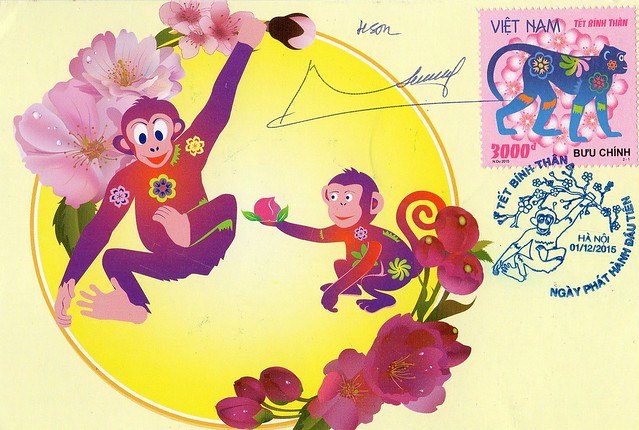

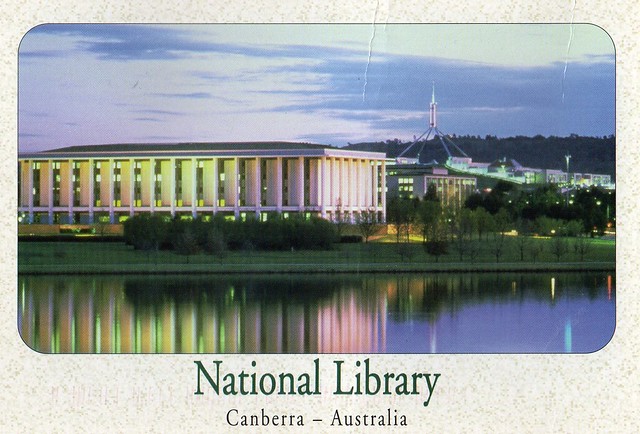

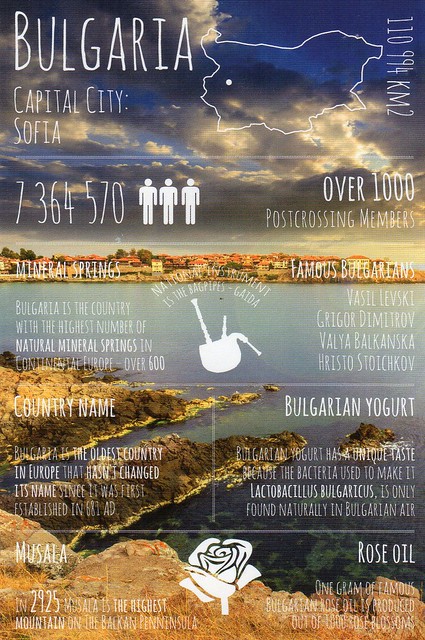





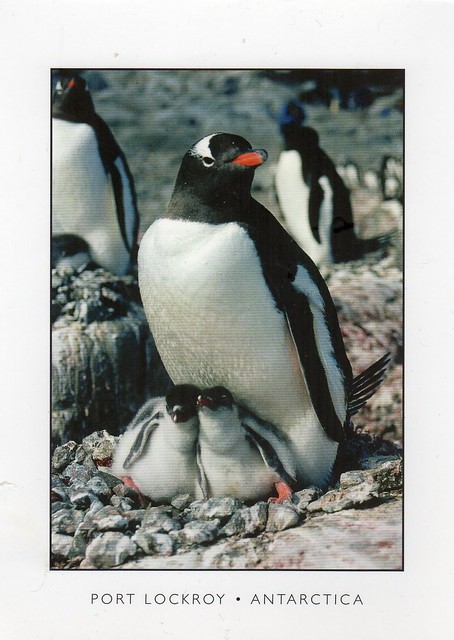

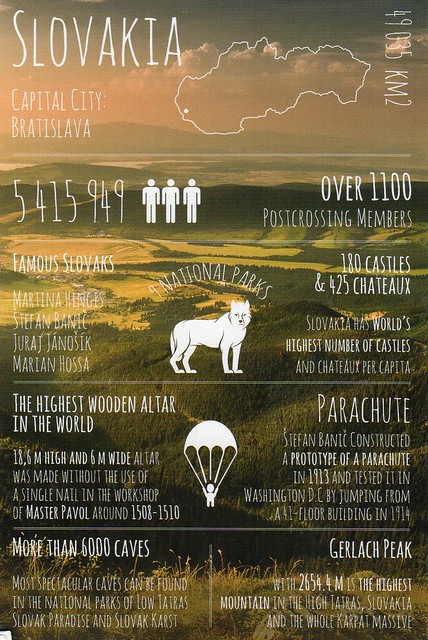





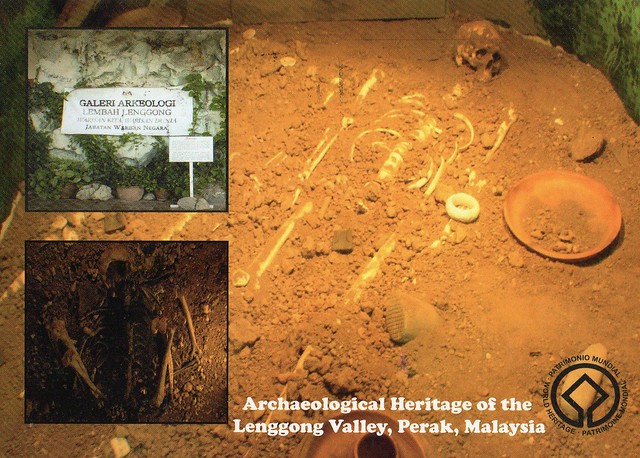




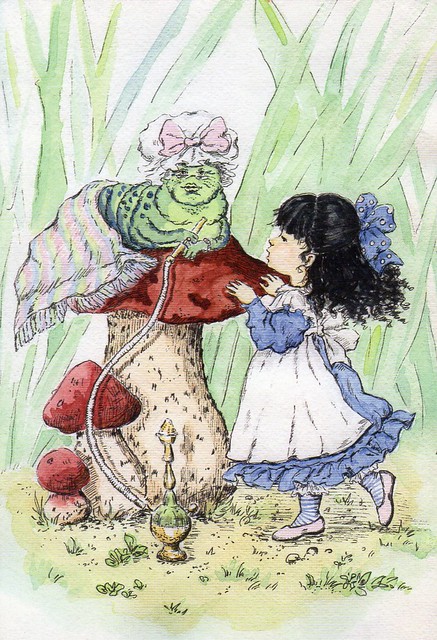

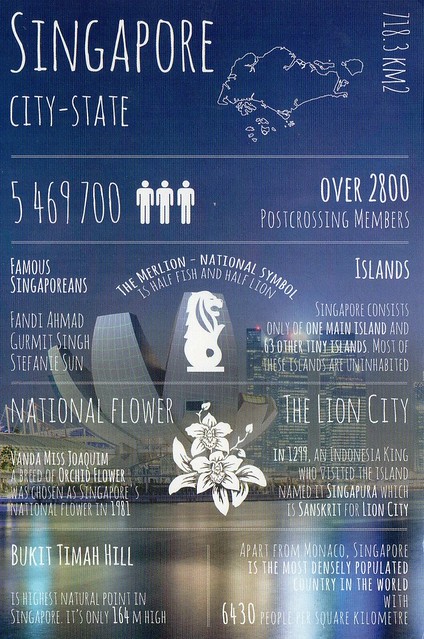

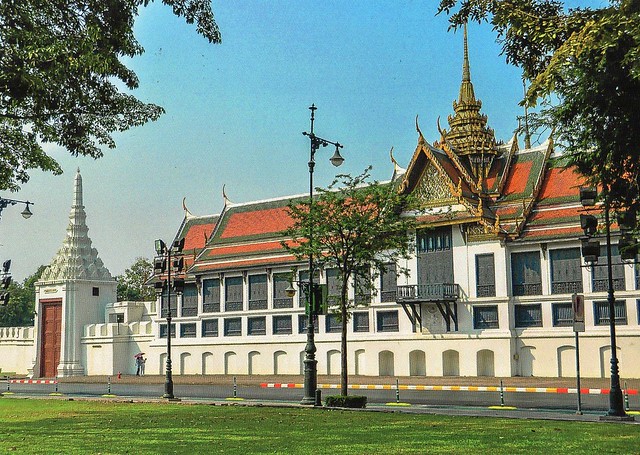

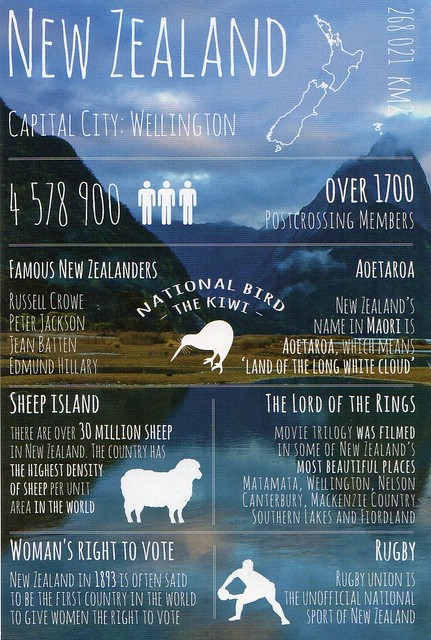

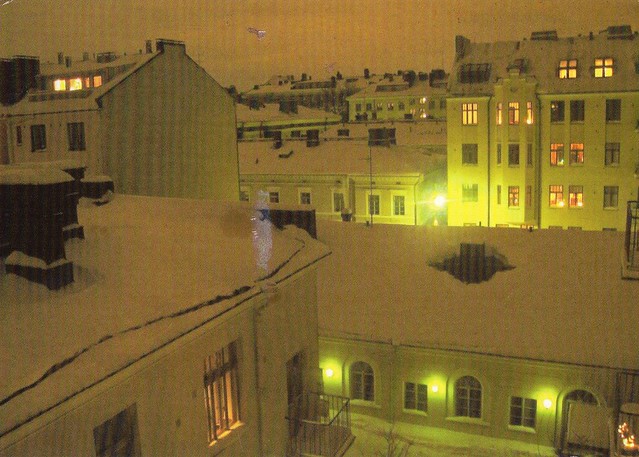

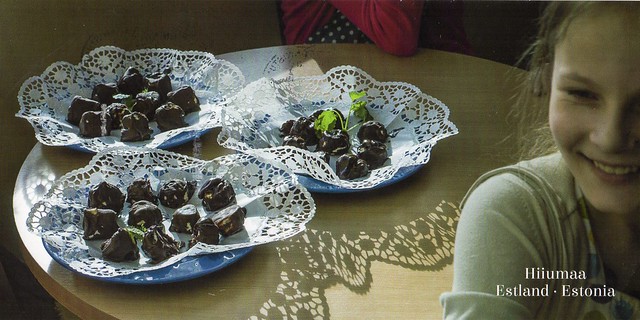





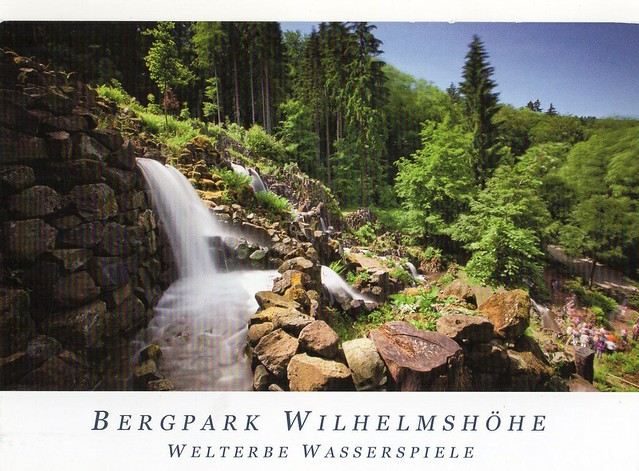



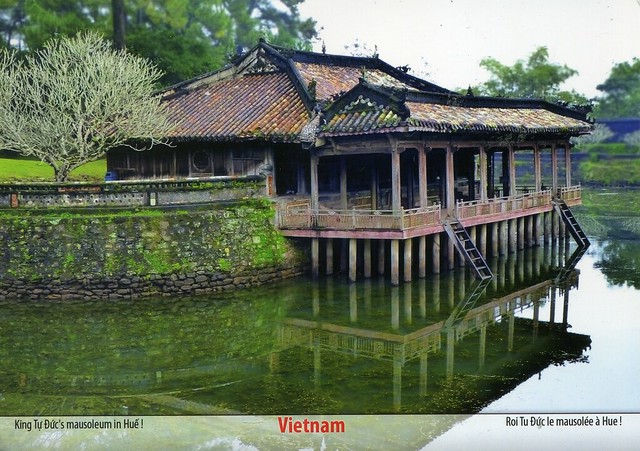







 Maroon
Maroon 









































































































































































